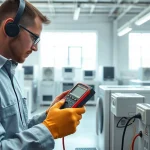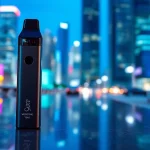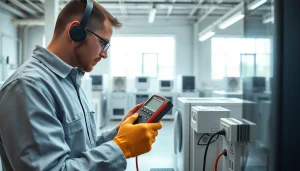Understanding Emergency Light Testing
Emergency lighting systems serve a crucial role in ensuring safety during emergencies. These systems light designated escape routes, guiding occupants to safety in low visibility conditions. Therefore, maintaining operational readiness through Emergency Light Testing cannot be overlooked. Regular testing and maintenance are vital not just for compliance with fire safety regulations, but also for the protection of lives. In this comprehensive guide, we will explore what emergency light testing entails, its importance, legal requirements, types of emergency lights, testing procedures, common issues, troubleshooting, and best practices to ensure optimal functionality and compliance.
What is Emergency Light Testing?
Emergency light testing is the process of evaluating the functionality and reliability of emergency lighting systems. The main objective is to ensure that the lights will activate during an emergency, such as a power failure, providing adequate illumination to aid in evacuation. Testing generally involves two primary types of assessments: monthly functionality tests and annual duration tests, which check battery capacity over longer periods. This testing can reveal any issues such as burnt-out bulbs, dead batteries, or general system failures that must be addressed promptly.
Importance of Regular Testing
The significance of regular emergency light testing lays in its direct correlation to safety and compliance. Below are key reasons why regular testing is needed:
- Compliance with Regulations: Authorities enforce strict guidelines on emergency lighting, specifying testing frequency and documentation standards. Non-compliance can lead to serious legal penalties.
- Enhanced Safety: Functional emergency lights prevent chaos during an emergency and ensure that occupants can evacuate safely and swiftly.
- Operational Assurance: Regular testing guarantees that emergency systems operate as intended, mitigating the risk of equipment failure.
- Peace of Mind: Knowing that safety systems are reliably operational provides confidence to building occupants and management.
Legal Requirements and Standards
Emergency lighting testing is governed by various standards and codes that set requirements for functionality and maintenance. Key standards include:
- NFPA 101: The Life Safety Code stipulates that emergency lights must be operational and tested according to specified frequencies. Monthly 30-second tests and annual 90-minute tests are commonly mandated.
- OSHA Regulations: Under OSHA guidelines, employers must ensure that exit routes are marked and illuminated properly, with tests documented to confirm compliance.
- International Building Code (IBC): IBC emphasizes the importance of emergency lights being reliable and functioning in emergencies.
Types of Emergency Lights
Battery-Powered vs. Hardwired Systems
When choosing emergency lighting systems, the two main types to consider are battery-powered and hardwired systems:
- Battery-Powered Systems: These lights operate independently of the electrical grid and typically run on rechargeable batteries. They are beneficial in places where electrical back-up might be unreliable.
- Hardwired Systems: These systems connect directly to the building’s electrical system. They automatically turn on when there is a power failure and usually have battery backup to maintain functionality.
LED Emergency Lighting Options
LED emergency lighting is increasingly preferred due to its energy efficiency, longevity, and high illumination levels. Compared to traditional incandescent bulbs, LEDs use less energy and have a longer lifespan, which reduces maintenance costs and frequency of replacements. Furthermore, they provide instant lighting, crucial for emergency visibility. When investing in LED emergency lights, look for options with a minimum of 90 minutes of battery back-up capability to meet regulatory testing requirements.
Choosing the Right Emergency Lights for Your Facility
Selecting the right emergency lighting system depends on several factors, including facility size, layout, and specific safety needs. Considerations should include:
- Building Layout: Conduct a thorough risk assessment to identify key areas that require emergency lighting, including exit paths, staircases, and assembly points.
- Occupancy Type: Different types of buildings (office, hospital, warehouse, etc.) have unique requirements for emergency lighting based on occupancy load and function.
- Local Regulations: Always ensure your emergency lighting choices adhere to local fire codes and safety regulations.
Testing Procedures and Frequency
Monthly Functionality Tests
Monthly testing of emergency lights is essential to ensure they function correctly. This process typically involves:
- Visual Inspection: Check for damage or signs of wear on the light fixtures.
- Push-Button Test: Most emergency lights are equipped with a “test” button. Pressing this button should activate the light, confirming the circuit is functional.
- Duration Check: Assess if the light operates correctly for at least 30 seconds during the test.
Annual 90-Minute Tests
In addition to monthly checks, an annual 90-minute test is usually required to ensure batteries hold a charge for the duration of an emergency. To perform this test:
- Disconnect the main power supply to simulate a power outage.
- Record the performance, ensuring lights remain operational for the full 90 minutes.
- Inspect the battery afterwards for any signs of failure or reduced capacity.
Documenting Testing Results
Accurate record-keeping is crucial for compliance and safety management. Documentation should include:
- Date and time of each test.
- Results of functionality tests.
- Any issues discovered and actions taken to resolve them.
- Signatures of personnel who conducted the tests.
Common Issues and Troubleshooting
Identifying Malfunctions During Testing
During routine tests, operators may encounter various issues, such as:
- Burned-Out Bulbs: Easily identified during visual inspections, requiring replacement.
- Non-Functional Lights: If a light does not activate during testing, it may indicate a failing battery or electrical connection issue.
- Short Battery Life: If lights fail to last for the required 90 minutes, battery replacement might be needed.
How to Replace Faulty Emergency Lights
If an emergency light is identified as faulty during testing, follow these steps to replace it:
- Turn off the power supply to the light fixture.
- Remove the faulty unit carefully while following safety guidelines.
- Install the new light fixture, ensuring all electrical connections are secure.
- Test the new unit to verify it is operating correctly.
Maintaining Compliance with Regulations
Consistent testing and maintenance are essential for compliance with fire safety laws. Periodic audits can be completed to ensure emergency lighting meets all necessary regulations. Collaborating with professional services that specialize in fire safety can support facilities in remaining compliant and updating any systems to meet evolving regulations.
Best Practices for Emergency Light Testing
Creating a Maintenance Schedule
Establishing a systematic maintenance schedule that integrates all testing and inspection timelines can improve compliance and safety outcomes. A designated safety officer should oversee the testing intervals outlined by regulations, and appointments should be made as necessary.
Training Staff on Emergency Procedures
Creating awareness among staff about emergency lighting systems and their functionality ensures effective use during emergencies. Regular training sessions should be held where employees learn how to perform basic tests, recognize when issues arise, and understand evacuation routes illuminated by emergency lights.
Leveraging Technology for Efficiency
Many modern emergency lighting systems incorporate smart technologies that need less manual intervention. Features may include automatic testing and detailed reporting, making it easier for facilities to maintain compliance. By utilizing such technology, facility managers can ensure the integrity of their emergency lighting without devoting excessive time to manual testing.


















